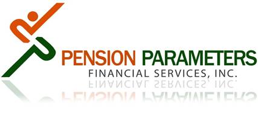MARKET UPDATE: FOURTH QUARTER 2017
The fourth quarter was another celebration for bulls in a year to be remembered for strong returns and an extraordinary lack of market volatility. Although news on health care, tax reforms, political uncertainty and elevated market conditions kept investors cautious, the market largely shrugged off these fears and asset classes rose based upon supportive fundamental growth and strong corporate earnings. The Dow Jones Industrial average was up 29.64% and the S&P 500 was up 21.5 % for the year. International markets also had a successful year. The MSCI EAFE Index, which tracks developed markets, gained 25.03% for the year. The more volatile MSCI Emerging markets Index returned 37.75% for the year. Fixed income had a more volatile year than equities, as early outperformance was offset by rising rates. The Federal Reserve (Fed) increased the federal funds rate three times in 2017. Although these rate hikes are indicative of the Fed’s confidence in the ongoing economic expansion, rising rates can hit fixed income markets – and that is exactly what happened. Markets currently anticipate two to three rate hikes in 2018, which could have similar effects. European growth continued to improve, with several countries growing faster than the U.S. Meanwhile, growth in China remains solid and even Japan has started to improve. This is the first synchronized global growth cycle seen since the crisis, which could help all countries around the world.
With the economic news good, the major source of risk remains political. In Europe, the inconclusive German election and stalled coalition talks rattled European markets and still have the potential to create more uncertainty. The ongoing Brexit process in the U.K. is also creating concern. Looking to Asia, North Korean nuclear tests continue to destabilize the region.
Market volatility is a definite possibility. But even then, any short-term shocks should be offset by the strong economic and corporate fundamentals. As always, a well-diversified portfolio matched to your risk tolerance remains the best way to meet your financial goals over the long term.
TAX CUTS AND JOBS ACT – HIGHLIGHTS OF THE RECENT TAX REFORM BILL
Corporate Tax –the act substantially reduces the corporate tax rate from a current maximum of 35% to a flat rate of 21% and repeals the corporate alternative minimum tax. The act allows for full expensing of capital investments for the next five years but imposes a new limit on the deductibility of interest expense.
Individual Tax – the act retains seven tax brackets for individual ordinary income, ranging from 10% to 37%. It also roughly doubles the standard deduction, repeals the personal exemption and increases the child tax credit. It retains the charitable contribution deduction and limits the mortgage interest deduction to first $750,000 in principal value. It limits the state & local deduction to a combined $10,000 for income, sales & property taxes. However, most provisions affecting individual taxation expire after December 31, 2025 and revert to pre-existing law.
Qualified Retirement Plans – the act retains the ability to defer compensation on a pre-tax and post-tax basis. Although the focus was on the potential “Rothification” of 401(k) plans, fortunately that did not materialize. The maximum 401(k)/403(b) employee elective deferral limit for 2018 is $18,500. The catch-up contribution limit for 2018 is $6,000.
Health Care – the act effectively repeals the Affordable Care Act’s individual mandate, starting in 2019. In agreeing to vote for the tax reform bill, Sen. Susan Collins (R-Maine) sought and received a promise from Senate Majority Leader Mitch McConnell (R-KY.) that further legislation would be introduced to stabilize the insurance markets and bolster health care protections.
Pass-Through Entities – the act provides for a new 20% deduction for the business income of certain sole proprietorships, partnerships and S Corporations subject to various restrictions. Service businesses, such as law and accounting firms, are eligible for the deduction if owners are under an income threshold. These new rules could be adjusted by subsequent legislation or clarified through guidance by the Treasury Department and the IRS.
REGULATORY LANDSCAPE – BILLS PROPOSED BY THE HOUSE WAYS AND MEANS COMMITTEE
Proposed Automatic Retirement Plan Act of 2017 – introduced December 1, 2017, would require many employers to offer a 401(k) or 403(b) plan, with exceptions for governments, churches and companies with fewer than 10 employees or less than three years in business. It does not cover employees who are in collective bargaining agreements, under 21 or working temporarily. Employer contributions would not be required, but failure to offer a plan would incur an excise tax. The bill would make it easier for small businesses to use multiple employer plans and would provide a startup credit for offering plans. The bill would also expand automatic savings and escalation features and set auto-enrollment contribution rates at 6%. That rate would automatically escalate by 1% per year until it reached 10%. Other best practices the bill requires include the use of target-date funds or other qualified default investment alternatives, and having a lifetime income component in at least 50% of vested accounts.
Proposed Retirement Plan Simplification and Enhancement Act of 2017 –would modify the current automatic enrollment safe harbor cap of 10% of pay and establish a new safe harbor to get employers to defer more than the automatic deferral floor of 3% of salary in the first year. It would also exempt retirement savings below $250,000 from complicated required minimum distribution rules, and make it easier to take advantage of the savers’ credit.
Phone: (212) 675-9360 OR (732) 583-1313 January 2018

